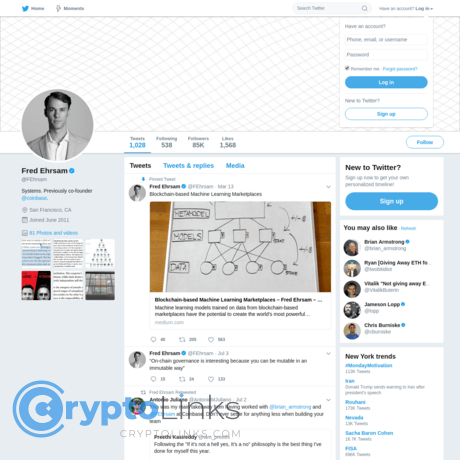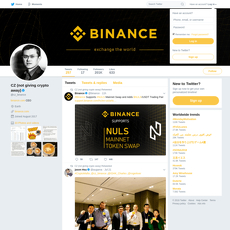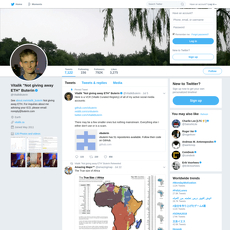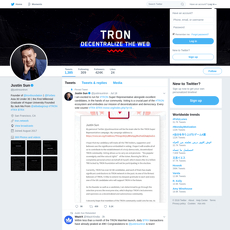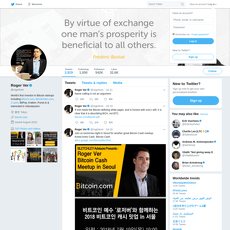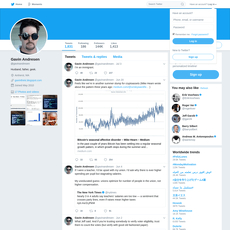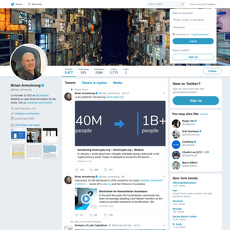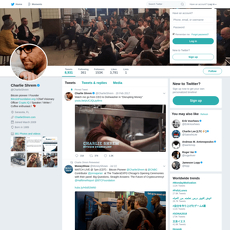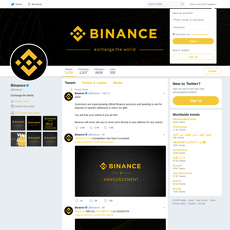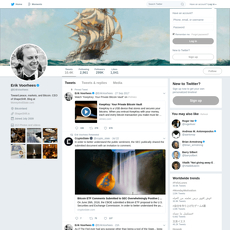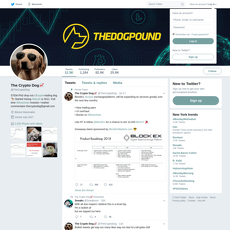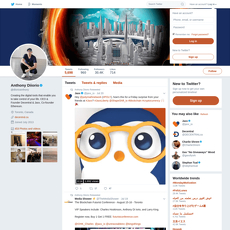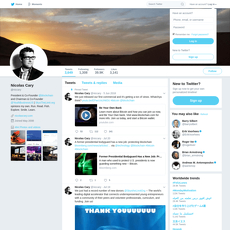Fred Ehrsam Review
Fred Ehrsam
twitter.com
Fred Ehrsam Review Guide: What to Know, Why to Follow, and FAQ
Is following @fehrsam actually worth your time—or just another excuse to get lost on crypto Twitter?
The problem with following crypto Twitter (and why Fred stands out)
Crypto Twitter is noisy. Even smart people get buried under hot takes, trade screenshots, and recycled memes. You’re trying to learn, spot durable insights, and see what matters next—without wasting hours. That’s harder than it sounds.
- Signal vs. hype: Research threads get crowded out by price talk and engagement bait. A landmark MIT study found false or sensational posts spread faster than the truth. In crypto, that effect is amplified by charts and narratives that age in days.
- Context gaps: Many folks don’t know what Fred actually did at Coinbase or why Paradigm matters. Without that context, his posts can feel “big picture” but hard to apply.
- Thread overload: Long, thoughtful posts are great—until you can’t turn them into actions or a research habit. Bookmarks pile up. Nothing sticks.
- Credibility traps: Impersonator accounts, screenshot-only “leaks,” and quotes pulled out of context make it tough to tell what’s real.
- Attention tax: Endless scrolling nukes focus. You want a way to follow one of crypto’s most influential thinkers without letting Twitter run your day.
That’s where following Fred Ehrsam the right way helps. He posts less often than most, but when he does, it’s usually signal—ideas about crypto infrastructure, open systems, scaling, and long-term building. The trick is knowing how to use it.
What you’ll get from this guide
I’ve cut the fluff and turned Fred’s presence into something practical you can use. Here’s what I’ll walk through next:
- Who Fred is and why his background matters (Coinbase, Paradigm, and the through-line)
- What he actually posts—and how to pull value without doomscrolling
- How his investments map to his thesis (and what to watch for)
- The way he thinks about crypto’s future—and how to apply that to your own research
- A clean FAQ that answers the questions people keep asking
Result: You’ll know whether he’s worth a follow, how to set up your feed to get the most out of it, and how to turn his ideas into a repeatable research flow.
Who this is for
- Builders: You want frameworks for product, infra, and open systems—not just price talk.
- Investors and analysts: You want a high-signal read on where crypto plumbing is heading.
- Curious readers: You want context on Coinbase, Paradigm, and why Fred’s lens is useful.
- Time-pressed people: You need a setup that surfaces signal and filters everything else.
Quick note before we start
- Not investment advice: This is a practical review of a public voice, focused on research and context.
- Public sources only: I’ll reference credible, public materials where helpful—think Wikipedia, Golden, company sites, podcasts, and well-known interviews.
- Independent take: The goal is to help you build your own view, not to outsource your thinking.
Ready for the fast version of who Fred is—what he built at Coinbase, why Paradigm is his second act, and what that says about his lens on crypto? Let’s start with a quick profile you can trust.
Who is Fred Ehrsam? A quick profile you can trust
Short bio: from trader to Coinbase co-founder to Paradigm
Fred Ehrsam is one of crypto’s most durable builders and thinkers. He studied computer science and economics at Duke, started his career as a foreign exchange trader at Goldman Sachs, and then made the leap into Bitcoin in 2012—co-founding Coinbase with Brian Armstrong. After helping Coinbase grow from scrappy startup to a household name, he co-founded Paradigm in 2018 with Matt Huang to back and help build the next wave of crypto infrastructure and protocols.
If you want quick receipts: here’s his public profile on Wikipedia and a structured snapshot on Golden.
What did Fred Ehrsam do at Coinbase? He co-founded Coinbase with Brian Armstrong in 2012 and served as its first President—building the early product and team, and setting the company’s direction.
At Coinbase, Fred’s fingerprints are on the “make crypto simple” era that brought millions in. As first President, he focused on product clarity, trust, and a builder culture. The early decisions were deceptively basic—and exactly what the market needed.
- Product focus: a clean on-ramp for buying and holding Bitcoin, with bank integrations and clear UX before “crypto UX” was a phrase.
- Team and culture: hired early engineers and operators, set high bars for security and reliability, and pushed for crypto’s legitimacy with regulators and institutions.
- Mission framing: helped embed Coinbase’s north star—make an open financial system for the world—into the day-to-day roadmap.
“Create an open financial system for the world.”
That line wasn’t just website copy. It shaped product trade-offs—prioritizing security, compliance, and accessibility so crypto could reach far beyond early adopters.
Paradigm: why his second act matters and what the firm focuses on
Fred’s second chapter at Paradigm is all about depth. Paradigm is known for being research-driven and builder-obsessed—writing papers, publishing code, and working shoulder-to-shoulder with teams. This isn’t just capital; it’s an R&D engine.
- Research with teeth: Paradigm researchers and engineers (names you’ll recognize like Dan Robinson, Georgios Konstantopoulos, and samczsun) publish thought pieces and formal analyses on topics like AMM design, MEV, scaling, and security.
- Open-source tools: they maintain real, widely used software like Foundry for Ethereum development—evidence of a “show, don’t tell” approach.
- Security culture: frequent audits, post-mortems, and the Paradigm CTF push the bar higher for how protocols get tested and shipped.
Why this matters: ecosystems grow where research, tools, and developer experience are strong. Independent data backs this up—Electric Capital’s annual Developer Report tracks sustained developer retention and growth in stacks with robust infra and open-source momentum. That’s exactly the surface area Paradigm leans into.
What Fred cares about: crypto research, infrastructure, open systems, and long-term thinking
Fred plays the long game. He consistently backs work that compounds over years: core infrastructure, protocol design, privacy and cryptography, and mechanisms that keep systems open and composable. He’s far more interested in primitives than hype cycles.
- Research-first: ideas and code that expand what’s possible—L2 scaling, formal verification, better wallets, safer contracts.
- Open systems: public goods, open-source tools, and governance that resists capture.
- Builder empathy: reduce complexity for developers; ship tools that make hard things easier.
- Decade horizons: optimize for staying power, not short-term spikes.
Put simply, he’s betting that crypto’s winners will be the ones that feel like the internet: permissionless, interoperable, and relentlessly improved by the people who show up to build.
So what does this actually look like when he posts? Next up, I’ll break down how he uses Twitter—how often he shares, the themes worth tracking, and the exact threads I recommend you bookmark first. Curious which ones make the cut?
Reviewing @fehrsam on Twitter: signal, style, and best use
Posting cadence and tone: thoughtful, research-heavy, fewer but high-signal posts
I check Fred’s feed the way I check a quarterly letter: not often, but I read every word. He posts less than the average crypto account, and that’s the point—when he shows up, it’s usually to frame a big shift, share a research thread, or clarify a concept that’s getting lost in the noise.
- Cadence: Infrequent, clustered around meaningful moments (protocol breakthroughs, market regime changes, major launches, governance shifts).
- Style: Calm, long-term, often linking to primary sources. Minimal meme content, minimal hot takes.
- Value-add: Context and first-principles framing. He’ll highlight why something matters, not just that it happened.
Pew Research has shown a small share of users create the majority of posts on X. Fred isn’t in that high-volume bucket—and that’s a feature. The scarcity makes each post easier to treat like a curated signal.
“In a world of noise, your edge is what you ignore.”
Common themes: crypto history, infra, scaling, institutions, open-source culture, and governance
Here’s what I consistently see across his timeline—and how I use it:
- Crypto history and cycles: He often references past inflection points to frame where we are now. It’s a helpful antidote to headline-chasing.
- Infrastructure and scaling: Rollups, client diversity, MEV, security assumptions—expect posts that pull you back to the technical levers that actually compound.
- Institutions and adoption: He’s realistic about institutions entering, but filters it through crypto’s core values: permissionless access and open systems.
- Open-source culture: Clear bias toward open R&D and public goods. Signals which tools and primitives will matter beyond the next quarter.
- Governance and mechanism design: Less “DAO hype,” more “what actually works” (governance minimization, credible neutrality, incentive alignment).
If you’re building or allocating, these are the lenses that prevent you from over-indexing on daily price action. They tilt you toward durable trends.
Best starting threads: foundational takes and timeless posts worth bookmarking
Want the high-signal stuff fast? I use these searches and workflows to pull up evergreen posts:
- All “from:fehrsam thread” — his long-form sequences.
- “from:fehrsam min_faves:500” — community-filtered highlights.
- “from:fehrsam rollups” and “from:fehrsam governance” — core themes in two clicks.
- “from:fehrsam filter:replies” — high-signal one-liners hidden in replies.
My “30-90-300” method for each good thread:
- 30s: Skim for the core claim.
- 90s: Open any linked research and note the assumptions.
- 300s: Bookmark and write a 3-bullet summary in your notes app with one question to investigate this week.
It sounds simple, but the compounding is real. Threads stop being “interesting” and start becoming working inputs to your thesis.
How to separate signal from noise: use lists, notifications, and bookmarks; read replies for extra context
I’m ruthless about curation. Here’s what works:
- Create a “Research” List: Add @fehrsam and a small circle of credible researchers and builders. Lists mute the algorithm and show posts in clean chronological order.
- Notifications (smart): Turn on “Tweets only” for Fred so you don’t get pinged for every like. Batch-check once a day to avoid context-switching.
- Bookmarks with tags: Use simple tags like #infra, #governance, #adoption. When you research a topic later, you’ll have a ready-made folder of his best takes.
- Read the replies: Some of his strongest insights live in replies to other researchers. That’s where nuance shows up—clarifications, edge cases, and constraints.
- Trace to sources: If he references research, open the source. Your edge is in reading what most people won’t.
Studies on attention consistently show that batching beats constant checking. Treat your feed like a journal you visit on purpose, not a slot machine you pull at random.
Avoid pitfalls: watch for impersonators, screenshot bait, and posts taken out of context
There’s always noise. Here’s how I cut it:
- Impersonators: Only follow the exact handle @fehrsam. Double-check the profile age and follower network before engaging.
- Screenshot bait: If you see a “Fred said…” screenshot, hunt down the original post. Nuance gets lost when a thread is chopped into a jpeg.
- Context drift: Quotes from years ago resurface as if they’re new. Use the timestamp. Ask: was this pre- or post- a major market/tech shift?
- Outrage replies: Don’t judge a post by the quote-tweets. Go to the source, read the full thread, and then check the linked references.
- Conflicts check: If a take aligns with a known investment or research agenda, flag it in your notes so you remember to cross-check later.
Here’s the fun part: once you know how to read his feed, you can start mapping it to the companies and protocols he engages with. Want to see what that reveals about his thesis—and how it might sharpen yours?
Investments and projects: what’s in Fred’s orbit (and what it says)
Notable investments: Neuralink, Filecoin, Mina, StarkWare—what these picks hint about his thesis
I watch what people fund as closely as what they say. Fred’s public footprint (personal and via Paradigm) points to a simple pattern: back hard tech, cryptography-forward infra, and primitives that can compound for a decade.
- Neuralink — commonly listed among Fred’s personal angel investments in databases like Golden and Crunchbase. It’s not crypto, but it shouts long-horizon thinking and a comfort with frontier R&D. The signal: he’s attracted to platforms that expand human-computer bandwidth. Crypto does this for value and coordination; brain–machine interfaces do it for raw I/O.
- Filecoin — decentralized storage with real-world utility. This lines up with a “crypto beyond trading” view: persistent data markets where crypto economics secure useful services. It also supports the idea that blockchains will underwrite the data economy, not just finance.
- Mina Protocol — a succinct blockchain that leans on zero-knowledge proofs so nodes can verify the chain in seconds. The thesis: ZK as a general-purpose unlock for privacy, scalability, and mobile-native participation.
- StarkWare — a core zk-STARK scaling provider (powering StarkNet). This is a direct bet on verification-over-computation and on Ethereum’s rollup-centric roadmap. If you believe settlement will be scarce and expensive, you bet on proof systems that shrink costs by orders of magnitude.
“Signal over spectacle. Bet on the builders who outlast the cycle.”
Zooming out, these choices rhyme: heavy cryptography, platform primitives, and infrastructure that compounds as usage grows. It’s less “hot token of the week,” more “engine room of the next decade.”
DeFi, L2s, and infra bets: how Paradigm allocates attention across the stack
Paradigm’s portfolio gives a clearer map of Fred’s orbit. Look at where they repeatedly show up:
- Layer 2 scaling and proofs — StarkWare and research contributions from Paradigm researchers have consistently pointed at rollups and ZK as the scalability lane. External data backs this: L2s have captured a growing share of Ethereum activity (see L2Beat for live metrics).
- Core DeFi exchanges/markets — Uniswap and dYdX represent paradigmatic (pun intended) bets: AMMs and perps are base-layer financial primitives. They’re not features; they’re markets that other apps plug into.
- MEV and trader tooling — support for research and products around MEV (e.g., work intersecting with Flashbots) shows a willingness to face the hard problems in block construction rather than ignore them. This protects user experience, security, and price fairness over time.
- Consumer interfaces — backing category leaders like OpenSea signaled a thesis that marketplaces will be the on-ramps for new user cohorts, not just wallets or exchanges. When consumer experiences hit, infra usage explodes underneath.
Why I think this matters: independent studies like the Electric Capital Developer Report show sustained developer growth in smart-contract platforms, ZK tooling, and L2 ecosystems. Paradigm’s portfolio positioning mirrors where builders are actually shipping, not just where prices are loudest.
Reading disclosures and conflicts: why you should track where he’s invested when interpreting posts
Fred is transparent that he’s an investor. That’s useful context. When he posts a thread on scaling choices or governance models, I ask myself:
- Is there equity or token exposure? If yes, I read it as expert insight but also marked as “sponsored by skin in the game.”
- What’s the time horizon? Many Paradigm bets are 5–10 year plays. That’s a different lens than a monthly catalyst.
- How did they handle misses? Paradigm publicly acknowledged its exposure to FTX during the collapse and wrote it down. That honesty matters—it shows they will take lumps in public and (ideally) adapt playbooks.
None of this reduces the value of the research or perspective. It just keeps my brain in “insight-first, position-aware” mode. Think of it like reading a great paper from a domain expert who also owns stock: still valuable, just tag it accordingly.
Where to verify: portfolio pages and credible databases like Golden for cross-checking
Don’t guess—check. Here’s where I verify what’s actually in Fred’s orbit:
- Paradigm portfolio — official, up-to-date positions and write-ups.
- Golden: Fred Ehrsam — useful cross-references on personal investments and roles.
- Golden: Paradigm (investment firm) — firm-level overview and notable deals.
- L2Beat — independent status, TVL, and risk profiles for rollups connected to the scaling thesis.
- Electric Capital Developer Report — longitudinal developer stats to sanity-check where innovation is concentrating.
- @fehrsam — when a new investment or research piece lands, it often shows up here first.
If you want a shortcut, bookmark those links, skim once a month, and note any overlaps with Fred’s latest posts. Patterns emerge fast.
So here’s the real question I keep in mind: if these bets are the foundation, what future is he optimizing for—and how can we use that lens to make better calls ourselves? Let’s open that up next.
How Fred sees the future of crypto
Mission-first: open financial systems over short-term profit, and why that matters for builders
Zooming out, the through-line is simple: prioritize open, neutral, permissionless systems that outlast hype. That’s not a slogan—it’s a design constraint. When I look at Fred’s public thinking and Paradigm’s research slant, the message to builders is consistent: build primitives that anyone can use, remix, and verify without asking for permission.
What this looks like in practice:
- Credible neutrality over control: protocols that minimize special privileges (no hidden admin keys, clear decentralization roadmaps, transparent governance).
- Composability as a feature, not a buzzword: upgrade paths that keep backwards compatibility so future apps can stack on top. Uniswap’s open interfaces and Ethereum’s EVM standards are the blueprint.
- Security first, then growth: audits, formal verification, and responsible rollout. If it can’t survive market stress, it won’t matter in five years.
- Long horizons: a 10-year plan beats a 10-week pump. The most durable protocols compound trust.
To gut-check that mission-first lens, I track developer energy. The Electric Capital Developer Report keeps showing a resilient core of open-source contributors building infra and tooling year after year. That’s what sustains an “open financial system,” not just price charts.
“Open beats closed—just not right away.”
That line stays with me because it’s how this space actually unfolds. Open systems look slower until they suddenly look inevitable.
Institutions are coming—without losing crypto’s ethos if we build the right primitives
Institutions are already here. In 2024, spot bitcoin ETFs in the U.S. crossed tens of billions in AUM—real, regulated rails that onboard mainstream capital. CME futures open interest regularly signals deep institutional participation. Payments giants are experimenting with settlement on-chain; Visa publicly expanded USDC settlement to Solana. Stablecoins now settle trillions of dollars annually across chains, according to multiple on-chain analytics sources.
Here’s the nuance I see in Fred’s framing: institutions aren’t the endgame—they’re one more user segment. The job is to meet them where they are without compromising the foundation that makes crypto different.
- Self-custody by default, custodians as an option: let institutions plug in, but keep the path to hold keys and verify on-chain.
- Proofs > promises: push for on-chain proof-of-reserves, verifiable settlement, and attestations that don’t require blind trust.
- Open standards at the base layer: so compliance happens at the edges, not inside the core protocol. Think allowlisted interfaces at the app layer, not closed base layers.
- Rollup neutrality: as L2s scale, more than one sequencer, open-source proving stacks, and clear decentralization phases (trackable on L2Beat) keep the ethos intact.
Institutions can accelerate adoption, but only if the core remains credibly neutral. That’s the “have your cake and eat it” version of crypto’s future—and it’s achievable.
What this means for you: translating big-picture views into practical filters for research and decisions
When I translate these ideas into an everyday filter for what to build or back, here’s the checklist I actually use:
- Time horizon filter: would I still care about this if the token price was flat for 24 months?
- Openness test: is the code open-source? clear license? strong peer review? public audits?
- Credible neutrality: multi-client or path toward it? If it’s a rollup, is there a decentralization roadmap and staged milestones?
- Economic flywheel: real fees paid by real users, not just emissions; gross margins that can support security and dev work.
- User ownership path: does the design allow users to exit, self-custody, and verify their balances independently?
- Resilience under stress: how did it behave during gas spikes or market sell-offs? any forced depegs, oracle failures, or stuck withdrawals?
- Developer magnet: are repos active and attracting contributors? cross-check with Electric Capital trends.
- Data sources to sanity-check: L2Beat for L2 risk and roadmaps, Chainalysis Adoption Index for where users are coming online, and protocol docs for governance mechanics.
Example in action: If Fred highlights a research thread on modular blockchains, I’ll scan whether the projects he’s engaging with have permissionless validator sets, transparent data availability guarantees, and sustainable fee economics—before I read a single “number go up” argument.
Where I agree (and where I push back): my take from years of reviewing crypto platforms and voices
Where I’m aligned:
- Mission-first beats mercenary tactics: the best ideas compound over long cycles.
- Infra matters: scaling, security, and research are still the main bottlenecks, not marketing.
- Open-source wins: the most forked repos often become the most valuable public goods.
- Institutions as users, not owners: welcome the volume, preserve the values.
Where I push back:
- Consumer apps need equal love: infra progress is great, but mainstream adoption hinges on products my non-crypto friends actually enjoy using. Account abstraction and intent-based UX need to be treated as first-class citizens.
- Governance capture is real: token-weighted voting can drift toward plutocracy. I want stronger experiments: quadratic funding, time-locked votes, citizen assemblies, and clear anti-whale safeguards.
- Bridge and L2 trust assumptions: security is still fragmented. Preference should go to shared security and battle-tested bridges, with transparent upgradability and incident response.
- Compliance creep at the base layer: I’ll always argue for compliance at app edges, never in the core protocol, or we risk rebuilding Web2 with extra steps.
Underneath it all is a human reason to care. I want an internet of value where anyone—teenagers in Lagos, freelancers in Manila, retirees in Lisbon—can hold, send, and build without gatekeepers. That’s why mission-first isn’t a vibe; it’s a blueprint.
If you’re nodding along and wondering how to turn Fred’s posts into actual signal without living on Twitter, I’ve got a simple, battle-tested setup I use every week. Want the playbook?
Get the most value from following Fred (my playbook)
Simple setup: turn on notifications, add a “Research” list, book a weekly catch‑up
I treat Fred’s feed like a research signal, not entertainment. Here’s the exact setup I use so I never miss a high‑value post and don’t get stuck doomscrolling:
- Turn on X notifications (Tweets only): go to @fehrsam’s profile → bell icon → enable notifications for new Tweets. Keep push alerts on your phone and desktop; mute everything else. This cuts the noise while surfacing the few posts that matter.
- Create a “Research” List: add @fehrsam to a private List called “Crypto Research.” Keep this list lean (under 30 accounts). Viewing via Lists bypasses the For You/Home timeline and reduces algorithmic bait.
- Book a 30‑minute weekly catch‑up: every Friday, I skim that List, open anything meaty, and file notes. This small ritual compounds. There’s good evidence that spaced review boosts retention (the spacing effect and weekly reviews from productivity science are consistently linked to better recall and decision quality).
- Save and tag fast: if a post is worth reusing, I:
- Unroll with Thread Reader to read cleanly.
- Clip to Reader/Notion with tags like “L2,” “governance,” “MEV,” “infra.”
- Add one action line: “What will I check next?” (paper, repo, counterpoint).
- Optional automation: use RSS to create a digest: nitter.net/fehrsam/rss (if an instance is down, switch), pipe it to Feedly or an email summary so you have a searchable archive.
Quick filters I actually run in search when I’m researching a topic:
from:fehrsam (rollups OR scaling OR L2) -is:retweetfrom:fehrsam (governance OR institutions OR open-source) -is:replyfrom:fehrsam since:2023-01-01 (MEV OR security)
These queries surface “evergreen” takes you can bookmark and reuse.
Pair with smart companion accounts
Context is everything. Pairing Fred’s posts with adjacent thinkers gives you a 360° view—founder lens, research lens, protocol lens. My current “Research” List stack looks like this:
- @paradigm — firm updates and research announcements to match Fred’s high‑level takes with papers and code.
- @brian_armstrong — the Coinbase operator lens on policy, product, and adoption (complements Fred’s long‑range thinking).
- @vitalikbuterin — canonical references on scaling, governance, PBS/MEV; great for cross‑checking first principles.
- @danrobinson and @gakonst — Paradigm researchers; deep posts on smart contract security, L2 design, and infra trade‑offs.
- @hasufl — systems/MEV/governance angles; useful when Fred touches incentives or decentralization.
- @jessepollak — Base and practical infra rollout signals; helpful when Fred hints at institutions and L2 UX.
- Builders with traction (rotate quarterly): founders or core devs from projects Fred references. This is where you catch repos, audits, and design docs early.
Tip: cap this List at ~25–30 accounts. More than that and the signal drops. I prune it monthly.
Handy resources I’ll reference
When Fred posts something dense, I jump straight to primary sources so I can verify or extend the idea:
- Wikipedia: Fred Ehrsam — quick context checks and timeline snapshots.
- Golden: Fred Ehrsam — portfolio signals and cross‑links to companies, categories, and people.
- Paradigm Research — the best pairing with Fred’s threads; scan authors like Dan Robinson and Georgios Konstantopoulos.
- Vitalik’s blog — background posts for anything touching rollups, governance, or cryptoeconomics.
- Curated resources I keep updated — my running library of explainers, docs, and source links relevant to Fred’s topics.
Pro tip: when Fred mentions a project or concept, search its audit reports, EIPs, or whitepapers in the same sitting. A quick triangulation beats hours of timeline takes.
Risks and caveats (read this part)
- Not investment advice: treat all posts as idea fuel, not trade signals. Smart people change their minds with new data.
- Past performance bias: Coinbase and Paradigm success can anchor expectations. Force yourself to ask, “What would invalidate this thesis?”
- Confirmation loops: following only aligned voices narrows your view. Pair Fred’s posts with a counter‑position—academic papers, credible skeptics, or protocol risk disclosures.
- Hype cycles and recency: high‑attention topics can skew your research time. Set a 70/30 split: 70% on long‑term primitives (security, scaling, UX), 30% on “now.”
- Always verify incentives: check portfolio connections and disclosures before you lean on a take. Cross‑reference with Golden and firm pages so you know when you’re reading an invested opinion.
- Misinformation risk: social feeds reward speed, not accuracy. Building the habit of second‑sourcing reduces error—worth noting given research on how fast viral falsehoods spread online (see MIT’s summary of the 2018 Science study: false news travels faster than true).
Want the no‑BS answers to the questions everyone keeps asking—what exactly he did at Coinbase, where he’s invested, and whether following him counts as “advice”? I’ve got a tight FAQ up next that clears it all up and shows you how to keep up without doomscrolling. Ready?
FAQ and wrap-up: everything you asked about Fred Ehrsam
What did Fred Ehrsam do at Coinbase?
He co-founded Coinbase with Brian Armstrong in 2012 and served as the company’s first President. In the early years, he helped shape product direction, hiring, and go-to-market, and was part of the push to make crypto usable for mainstream audiences. He stepped back from day-to-day work in 2017 and later left the board in 2022. If you want quick background checks, you can verify these milestones on Wikipedia and Coinbase’s historical press/blog posts.
What companies has Fred Ehrsam invested in?
Two buckets: personal angel checks and firm-led investments via Paradigm (which he co-founded in 2018).
- Paradigm-led or public deals worth noting: dYdX’s $65M Series C (Paradigm led; source: dYdX blog), Optimism’s $150M Series B (co-led by Paradigm and a16z; source: TechCrunch), and Flashbots’ $60M Series B (led by Paradigm; source: Flashbots).
- Areas Paradigm tends to back: core infrastructure (L2s/rollups, MEV research, clients), DeFi primitives, and open-source tooling. You’ll see that alignment in their public research and portfolio.
- Where to confirm specifics: check the live portfolio on Paradigm’s site and cross-reference with credible databases like Golden. Angel investments sometimes appear in press and databases such as Crunchbase, but those can lag or omit details.
Quick tip: when Fred comments on a protocol or theme, scan Paradigm’s portfolio and research to understand potential exposure or bias. It’s not a red flag—just context that helps you read the signal.
How does Fred Ehrsam view the future of crypto?
His lens is long-term and builder-first. A few patterns show up again and again in his feed and interviews:
- Open systems win: protocols and software that are credibly neutral, permissionless, and composable tend to outlast hype cycles.
- Infra before outcomes: better base layers, clients, wallets, and MEV-aware designs compound over time and unlock healthier apps later.
- Institutions will participate—on crypto’s terms: if the primitives are right, big players can join without breaking the ethos.
- Research matters: he often amplifies rigorous work from Paradigm researchers and independent builders. If you like timeless takes over headlines, that’s the appeal.
“Play long-term games with long-term people.” That’s not just a motto—it’s how his account reads: fewer, considered posts that reward re-reading and bookmarking.
Is following Fred investment advice?
No. He shares ideas, not trade calls. He also has stakes—directly or via Paradigm—in parts of the ecosystem. Treat his posts like a research feed. Cross-check with independent sources, read the docs, and make your own decisions. If you’re ever unsure whether a comment intersects with a Paradigm position, look it up. Transparency + your notes = better outcomes.
Best way to keep up without doomscrolling?
Here’s the quick setup I use so his signal stands out and doesn’t hijack my day:
- Notifications on, but only for him: turn on alerts for @fehrsam so you see the handful of posts that matter.
- Make a “Research” list: add Fred, Paradigm researchers (Dan Robinson, Georgios Konstantopoulos), and a few credible builders. Check the list, not your main feed.
- Save threads to read later: use bookmarks, Thread Reader, or a read-it-later app like Readwise Reader. Batch once a week.
- Search smart: punch this into X/Twitter search when you want highlights without scrolling: from:fehrsam min_faves:200.
- Always verify: when a post mentions a protocol, scan the docs, GitHub, and at least one neutral explainer before you act.
Bonus: a weekly 30-minute catch-up beats 30 random check-ins. Consistency > compulsive refresh.
Quick credibility check before you share anything
- Impersonators exist: confirm the handle is @fehrsam and the link points to paradigm.xyz or other known profiles.
- Context is king: if a post sounds extreme, open the thread or replies. Half the value is in the discussion.
Final word
Follow for ideas, not for trades. His feed is a sharp lens on where crypto came from and where it’s going next. Use it to sharpen your thesis, surface quality research, and spot durable trends—then back everything up with your own work. I’ll keep this post updated on Cryptolinks.com so you can drop in anytime for fresh links and context.
CryptoLinks.com does not endorse, promote, or associate with Twitter accounts that offer or imply unrealistic returns through potentially unethical practices. Our mission remains to guide the community toward safe, informed, and ethical participation in the cryptocurrency space. We urge our readers and the wider crypto community to remain vigilant, to conduct thorough research, and to always consider the broader implications of their investment choices.

